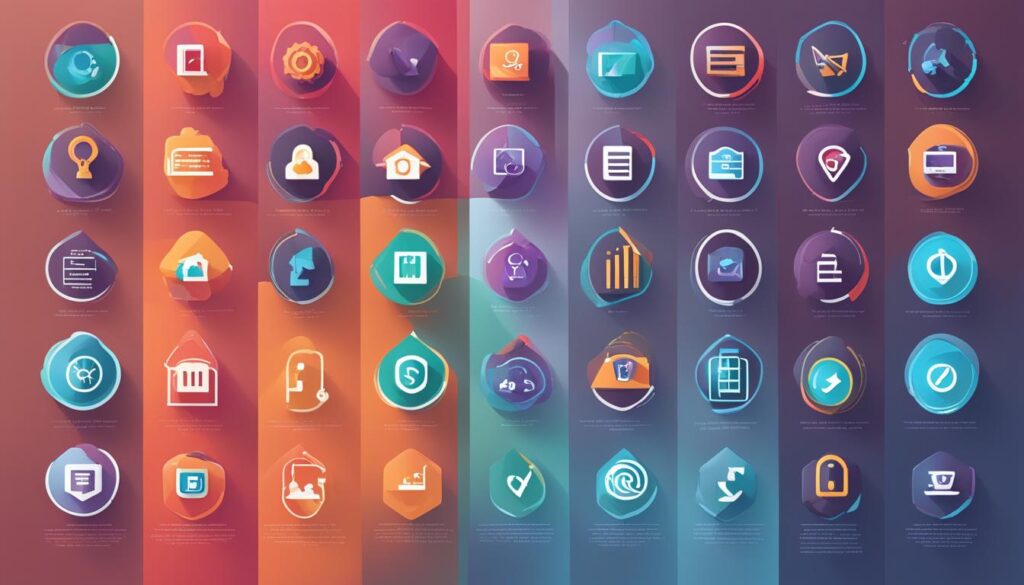Effective SAAS Pricing Strategies for Your Business

Implementing effective pricing strategies is crucial for the success of any SAAS business. The right pricing strategy can optimize profits and enhance customer retention, while the wrong strategy can lead to decreased revenue and loss of customers. In this article, we will explore various pricing models and SAAS business models that can help you set the right price for your product.
Key Takeaways
- Effective pricing strategies can optimize profits and enhance customer retention for SAAS businesses.
- Key factors to consider when determining SAAS pricing include value proposition, target audience, and competition.
- There are different SAAS pricing models, such as freemium, tiered pricing, and usage-based pricing, each with advantages and disadvantages.
- Setting the right price point is crucial for SAAS businesses, and techniques such as cost-plus pricing and value-based pricing can be used.
- Optimizing SAAS pricing for maximum profitability involves price discrimination, upselling, and cross-selling.
Understanding SAAS Pricing
As a SAAS business owner, understanding SAAS pricing is crucial to your success. At its core, SAAS pricing involves determining the value of your product and setting a price point that aligns with that value. The right price can enhance customer retention, increase profitability, and set you apart from your competitors.
It’s important to note that SAAS pricing is not a one-size-fits-all approach. A pricing strategy that works for one SAAS business may not be suitable for another. Therefore, it’s essential to assess your business and industry to develop a pricing model that best fits your specific needs.
One key aspect of understanding SAAS pricing involves exploring how pricing models can impact your business. Various pricing models exist, including freemium, tiered, usage-based, and per-user. Each model comes with its pros and cons, and it’s essential to choose a model that works best for your business and customer base.
By understanding SAAS pricing fundamentals, selecting the right pricing model, and evaluating your competition, you can set your SAAS business on the path to success.
Key Factors to Consider in SAAS Pricing
When it comes to SAAS pricing, there are several key factors to consider before determining the best pricing strategy for your business. These factors not only impact the pricing model but also influence customer perception of your product. Here are some of the essential factors:
- Value proposition: Your prices must align with the value you provide to customers. Consider the unique benefits of your product, how it addresses customer pain points, and what sets you apart from competitors.
- Target audience: Understanding your target audience is crucial in naming your prices. Demographics like age, location, job title, and income levels all impact what consumers are willing to spend on software.
- Competition: Analyze what competitors are charging for similar SAAS products. Determine whether customers are more interested in cost or features and adjust accordingly.
Factors Impacting SAAS Pricing

| Factor | Description |
|---|---|
| Value Proposition | Align prices with the unique value provided by your product, such as addressing customer pain points. |
| Target Audience | Consider the age, location, job title, and income levels of your target audience when naming prices. |
| Competition | Analyze competitors’ prices for similar SAAS products to determine whether customers prioritize cost or features. |
Understanding these factors is essential to formulating a SAAS pricing strategy that optimizes profits and enhances customer retention.
Different SAAS Pricing Models
SAAS pricing models are essential to the success of any SAAS business. Implementing the right pricing model can optimize profits and improve customer retention. In this section, we will explore different SAAS pricing models, their advantages, and disadvantages.
Freemium Model
The freemium model offers a basic version of the product for free, with limited features. This allows customers to try the product before deciding to upgrade to a paid version with additional features. The advantage of this model is that it can attract a large customer base and create brand awareness. However, the downside is that it can be challenging to convert free users into paying customers.
Tiered Pricing Model
The tiered pricing model offers different pricing plans with varying features and prices. This model is beneficial as it allows customers to choose the plan that works best for them and provides a clear understanding of what features are available at each pricing tier. However, the downside is that too many pricing tiers can be confusing for customers, and it can be challenging to identify the optimal pricing strategy.
Usage-based Pricing Model
The usage-based pricing model charges customers based on their usage of the product. This model is advantageous as it requires customers to pay only for what they use, making it affordable for small businesses. However, the downside is that customers may be hesitant to use the product extensively due to concerns about high costs.
“Choosing the right pricing model is critical to ensure the financial success of your SAAS business.”
Ultimately, selecting the appropriate SAAS pricing model for your business depends on your target audience, product offering, and overall business strategy. By exploring the different options and considering the advantages and disadvantages of each model, you can make an informed decision that drives profitability and customer satisfaction.
Setting the Right Price Point
Setting the right price point for your SAAS product can make or break your business. Finding the optimum price balance can be tricky, but the effort is worth the rewards. In this section, we will guide you through the different pricing strategies to help you find the right price point for your SAAS product.
Cost-Plus Pricing
Cost-plus pricing is a straightforward pricing strategy used by many SAAS businesses. It involves adding up all the costs incurred in producing and delivering your product and then adding a profit margin to arrive at the selling price. Although simple, this method can be limiting. It does not account for external factors such as competition, market demand, and customer willingness to pay.
Value-Based Pricing
Value-based pricing involves analyzing your SAAS product’s value proposition and pricing it based on the perceived value to the customers. The higher the perceived value, the higher the price point. This method considers external factors like competition and customers, making it more flexible and customizable than cost-plus pricing. Understanding your customer’s needs and identifying what they value most in your product is imperative and leads to successful value-based pricing.
Target a Specific Market Segment
Focusing on a specific demographic is another pricing strategy worth exploring. Each target market has its own unique needs, preferences, and budgets. By carefully researching and identifying the specific niche you want to pursue, your business has a better chance of catering to their needs. Offering customized or tailored packages for specific market segments can help businesses achieve better pricing and customer retention.
“In pricing, there’s no ‘one-size-fits-all.’ The right strategy depends on several factors, including target market, competition, and perceived value to customers. Finding the right pricing strategy requires careful research, consideration, and experimentation.”
Optimizing SAAS Pricing for Profit
When it comes to SAAS pricing, optimizing for maximum profit is key to the success of your business. By implementing proven strategies, you can leverage your pricing to both increase revenue and drive customer loyalty. Let’s explore some powerful techniques to help you achieve your profitability goals.
Price Discrimination
One powerful technique to optimize your SAAS pricing is price discrimination. With price discrimination, you can offer different prices to different customers based on factors such as geographic location, age, or income. By tailoring pricing to specific customer segments, you can maximize revenue and increase customer satisfaction.
For example, consider offering discounted pricing to students or seniors, or charging customers in higher-income areas a premium for your services. By doing so, you can increase your overall revenue and better meet the needs of your diverse customer base.
Upselling and Cross-Selling
Another effective pricing strategy is to utilize upselling and cross-selling techniques. Upselling involves encouraging existing customers to purchase higher-tier plans or additional features, while cross-selling involves offering complementary products or services that customers may find valuable.
By using upselling and cross-selling, you can increase the average revenue per user (ARPU) and strengthen customer loyalty. For example, offering a limited-time discount for customers who upgrade to a higher-tier plan can incentivize them to spend more, while suggesting complementary products during the checkout process can increase overall purchases.
Bundle Pricing
Bundle pricing is another effective technique to optimize your SAAS pricing. By offering tiered pricing packages that include multiple products or services, you can increase the overall perceived value of your offerings and incentivize customers to purchase more.
For example, you could offer a basic plan that includes essential features, a standard plan that includes additional features, and a premium plan that includes all features, along with additional services such as dedicated support. By doing so, you can cater to a wide range of customer needs and maximize your overall revenue.

SAAS Pricing Metrics and Analysis
As a SAAS business, keeping a close eye on your pricing metrics is crucial to making informed pricing decisions and optimizing profitability. By tracking key pricing metrics and analyzing the data, you can gain valuable insights into customer behavior and market trends, allowing you to adjust pricing strategies accordingly.
Some key pricing metrics to track include:
- Customer Acquisition Cost (CAC): This metric helps you determine the cost of acquiring a new customer. This includes marketing and sales expenses.
- Monthly Recurring Revenue (MRR): This metric measures your monthly revenue from recurring subscriptions.
- Churn Rate: The churn rate measures the percentage of customers who cancel their subscriptions each month.
- Customer Lifetime Value (CLTV): This metric calculates the total revenue a customer is expected to generate during their lifetime of using your product.
By analyzing these metrics, you can identify pricing trends and patterns that can inform your pricing strategy. For example, if your churn rate is high, it may be an indication that customers perceive your product as too expensive. Alternatively, if your CLTV is low, it may indicate that your pricing is too low and customers are not generating enough revenue for your business.
It’s important to note that pricing analysis should be an ongoing process. Regularly monitoring your pricing metrics and making small pricing adjustments based on the data can help you continually optimize your pricing for maximum profitability and customer retention.
SAAS Pricing Strategies for Customer Retention
Customer retention is vital for the long-term success of your SAAS business. By implementing effective pricing strategies, you can retain a loyal customer base and increase profits. Here are some SAAS pricing strategies to enhance customer retention:
Customer Loyalty Programs
Encourage customers to stay loyal to your brand by offering rewards and incentives. You can offer discounts or exclusive access to new features for customers who have been with your company for a certain amount of time. This will make them feel valued and incentivize them to continue using your product.
Annual Pricing Plans
Offer customers a discount for committing to a year of service upfront. This can help improve cash flow and increase customer retention by ensuring they stay with your product for the entirety of the year. Additionally, customers often appreciate the option to pay annually rather than monthly.
Long-Term Commitment Discounts
Offer customers a discount for committing to multiple-year contracts. This can provide your business with revenue stability and the customer with a sense of security in locking in a price for a few years. However, this strategy must be implemented carefully to avoid losing customers who may only require your product temporarily.

By applying these pricing strategies, you can enhance customer retention and cultivate a loyal customer base. However, keep in mind that pricing is just one aspect of customer retention; consistently providing quality service and value is equally important.
Pricing Strategies to Attract New Customers
Attracting new customers is a top priority for any SAAS business. Effective pricing strategies can help entice potential customers who are on the fence about your product. Let’s take a look at some pricing strategies that can help attract new customers:
Introductory Offers
Offering a discount or free trial to new customers can be an effective way to entice them to try your product. Once they see the value of your product, they’ll be more likely to continue using it and pay full price.
Referral Programs
Word-of-mouth marketing is powerful. Encouraging your current customers to refer their friends to your SAAS product can not only attract new customers but also increase customer loyalty. Consider offering a discount or other incentive to customers who refer new customers.
Pricing Incentives
Offering pricing incentives, such as a discount for signing up for an annual subscription, can encourage new customers to commit to your product long-term. When customers feel they’re getting a good deal, they’re more likely to choose your product over competitors.
Using these pricing strategies can help your SAAS business attract new customers and increase profitability. Continue experimenting with different pricing models and strategies to find what works best for your target audience and overall business goals.
Pricing Adjustments and Iterations
One of the most crucial aspects of SAAS pricing is continually making pricing adjustments and iterations over time to stay competitive and maximize profits.
The first step in making pricing adjustments is to gather customer feedback and analyze market trends to identify areas for improvement. Are customers consistently asking for new features or additional services? Are there any emerging trends in the market that could make your pricing obsolete?
Competitor analysis is another critical factor in making pricing adjustments. By closely monitoring your competitors’ pricing strategies, you can ensure that your pricing remains competitive. You can also identify gaps in the market that you can fill with new products or services.
Once you have gathered all the necessary data, you can begin making adjustments to your pricing. However, it’s crucial to remember that pricing adjustments should be made gradually and carefully. Too many drastic changes to your pricing can disrupt customer trust and lead to churn.
Finally, it’s essential to continue monitoring your pricing metrics and analyzing the impact of your pricing adjustments. By doing so, you can ensure that your pricing remains optimized for maximum profitability and customer retention.
Communicating Value in Your Pricing
One crucial aspect of SAAS pricing includes effectively communicating the value of your product through your pricing. This can be achieved in several ways:
- Pricing Tiers: Offer different pricing tiers that align with the features and benefits of your product. Clearly communicate the value of each tier to help customers select the right one for their needs.
- Features: Highlight the features of your product that provide value to customers. Focus on the benefits they will receive by selecting your product.
- Benefits: Clearly communicate the benefits of your product and how it will solve customer pain points. Use customer reviews or testimonials to demonstrate the value your product provides.
To effectively communicate value, it is essential to understand your target audience and what they value most. This can be achieved through customer research or feedback.
By implementing clear pricing tiers, highlighting product features, and communicating the benefits of your SAAS offering, you can effectively communicate the value of your product through your pricing.
Pricing Tips for SAAS Startups
If you’re starting a SAAS business, it’s important to price your product in a way that will optimize profits and attract customers. Here are some pricing tips that can help you achieve success:
Experiment with Your Pricing
As a startup, you need to experiment with different pricing models to find the one that resonates with your customers. Consider offering trial periods or low-cost options to attract early adopters.
Analyze the Competition
Performing competitive analysis can help you determine where your pricing stands in the market. Look at pricing of similar products to establish a baseline and make comparisons.
Use Variable Pricing
Implement variable pricing for your SAAS product, such as charging customers based on usage. This can help you attract both high-usage and low-usage customers without compromising profits.
Scale Pricing Alongside Your Business
As your business grows, you may need to adjust pricing to sustain profitability. Be sure to scale your pricing alongside your business and align it with growth strategies.
Position Your Pricing as an Investment
Frame your pricing as an investment in your customer’s success. Highlight the value your product delivers and the positive impact it can have on their business.
Conclusion
In conclusion, implementing effective SAAS pricing strategies is crucial for the success of your business. By understanding the fundamentals of SAAS pricing and considering key factors such as your value proposition, target audience, and competition, you can determine the best pricing model for your product.
Experimenting with different pricing strategies, such as freemium, tiered pricing, and usage-based pricing, can help you optimize your pricing for maximum profitability while also enhancing customer retention.
Monitoring and analyzing your SAAS pricing metrics and using customer feedback to make pricing adjustments and iterations over time can also help you stay competitive in the market.
Remember to communicate the value of your product through your pricing tiers, features, and benefits. If you’re a SAAS startup, ensure your pricing aligns with your business goals and helps you scale your business effectively.
Overall, by following the strategies and tips outlined in this article, you can set your SAAS business on the path to success through effective pricing practices.
FAQ
Why is pricing important for a SAAS business?
Pricing is crucial for a SAAS business because it directly impacts the profitability and success of the company. The right pricing strategy can attract customers, drive revenue, and enhance customer retention.
What factors should be considered when determining SAAS pricing?
When determining SAAS pricing, key factors to consider include the value proposition of your product, the target audience, the competition in the market, and the cost of providing the service.
What are some common SAAS pricing models?
Some common SAAS pricing models include freemium (offering a free basic version and charging for additional features), tiered pricing (offering different pricing tiers with varying levels of features and benefits), and usage-based pricing (charging based on the customer’s usage of the product).
How do I set the right price point for my SAAS product?
Setting the right price point for your SAAS product involves considering factors such as the value your product provides to customers, the pricing strategies of your competitors, and conducting market research to understand customer willingness to pay.
How can I optimize my SAAS pricing for profit?
You can optimize your SAAS pricing for profit by implementing pricing strategies such as price discrimination (offering different pricing options to different customer segments), upselling (encouraging customers to upgrade to higher-priced plans), and cross-selling (offering additional products or services at a discounted price).
What pricing metrics should I track for my SAAS business?
Some important pricing metrics to track for your SAAS business include customer acquisition cost (CAC), customer lifetime value (CLTV), churn rate, and monthly recurring revenue (MRR).
How can SAAS pricing strategies enhance customer retention?
SAAS pricing strategies can enhance customer retention by implementing tactics such as customer loyalty programs, offering annual pricing plans, and providing discounts for long-term commitments.
What pricing strategies can help attract new customers to my SAAS business?
Pricing strategies that can help attract new customers to your SAAS business include offering introductory offers (discounted pricing for first-time customers), referral programs (rewarding customers who refer new customers), and pricing incentives (special discounts or promotions).
Why is it important to make pricing adjustments and iterations over time?
It is important to make pricing adjustments and iterations over time to stay competitive in the market, respond to customer feedback, and adapt to changing market trends. Regularly evaluating and tweaking your pricing strategy can help optimize profitability and customer satisfaction.
How can I effectively communicate the value of my SAAS product through pricing?
You can effectively communicate the value of your SAAS product through pricing by creating transparent pricing tiers that clearly highlight the features and benefits of each tier. Additionally, emphasizing the unique value proposition of your product and showcasing customer success stories can help communicate the value to potential customers.
What pricing tips are recommended for SAAS startups?
Pricing tips for SAAS startups include conducting pricing experiments to determine optimal price points, analyzing and learning from competitor pricing strategies, and considering the role of pricing in scaling your business. It’s important for startups to be agile in their pricing approach and iterate based on customer feedback and market conditions.
